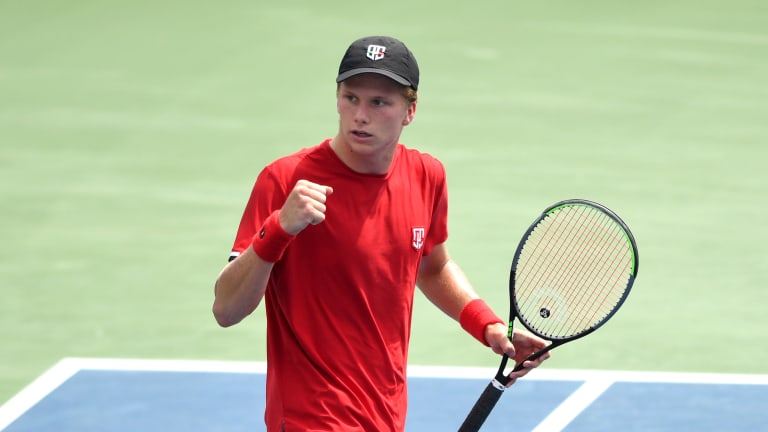Washington, USA
Through to the Citi Open semifinals, Brooksby's high tennis IQ keeps turning heads
By Aug 06, 2021Washington, USA
Washington final 'not the end' for Alejandro Davidovich Fokina, says Alex de Minaur
By Jul 28, 2025Washington, USA
Alex de Minaur saves three championship points to beat Alejandro Davidovich Fokina in Washington final
By Jul 28, 2025Washington, USA
Leylah Fernandez routs Anna Kalinskaya in Washington, D.C. for biggest title of career
By Jul 27, 2025Washington, USA
Alejandro Davidovich Fokina follows up Taylor Fritz DC Open win by powering past Ben Shelton
By Jul 27, 2025Washington, USA
Anna Kalinskaya halts Emma Raducanu for Washington final clash with Leylah Fernandez
By Jul 27, 2025Washington, USA
Leylah Fernandez shows fighting spirit to win DC Open tiebreak duel with Elena Rybakina
By Jul 26, 2025Washington, USA
Ben Shelton topples hometown favorite Frances Tiafoe in Washington, D.C.
By Jul 26, 2025Washington, USA
"A big benchmark": Emma Raducanu reaches DC Open semifinals in singles and doubles
By Jul 25, 2025Washington, USA
Venus Williams in Washington: A Queen Returns to Her Court
By Jul 25, 2025Through to the Citi Open semifinals, Brooksby's high tennis IQ keeps turning heads
Coming into this week, the big story was Rafael Nadal’s first trip to Washington, D.C. Now the big story is Jenson Brooksby’s trip to the final four, following his 6-1, 6-2 dismissal of John Millman on Friday.
Published Aug 06, 2021
Advertising
Advertising
Advertising

Brooksby is the lowest-ranked player into the semifinals of Washington, D.C. since 2007 (John Isner, then No. 416).
© Getty Images